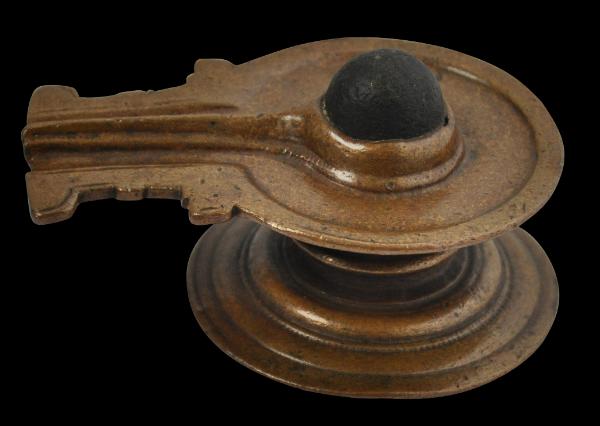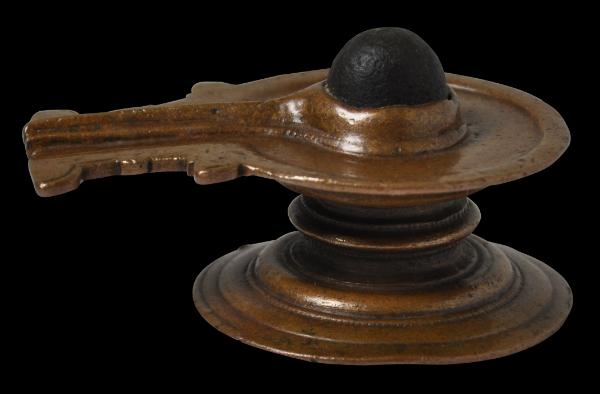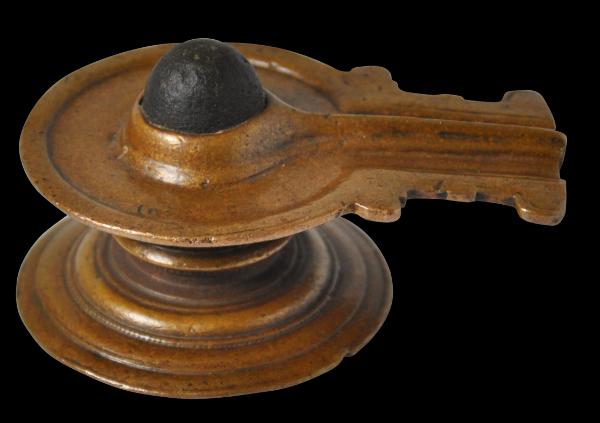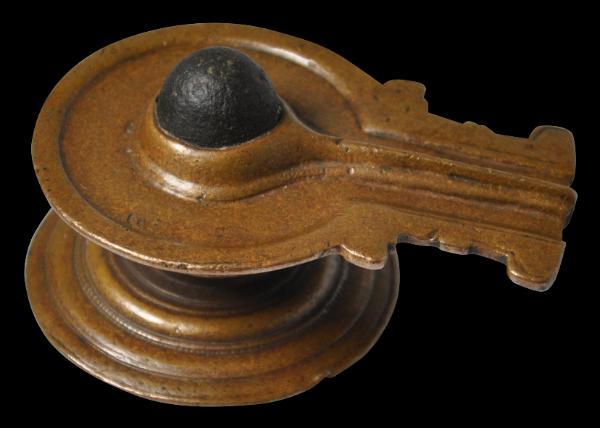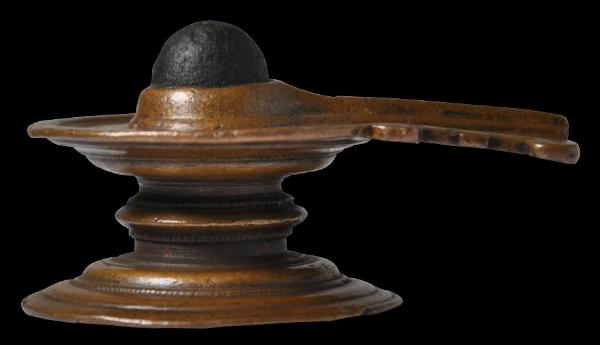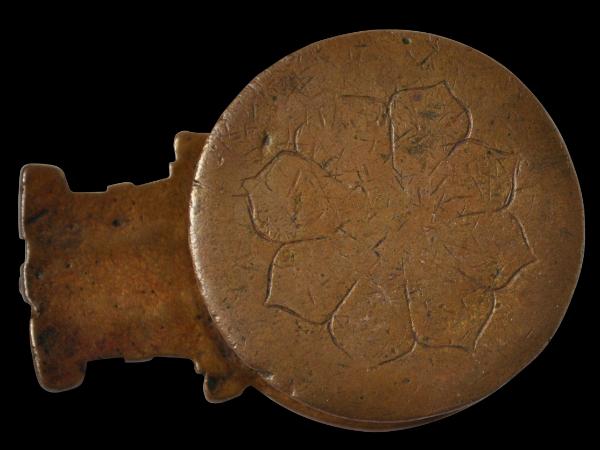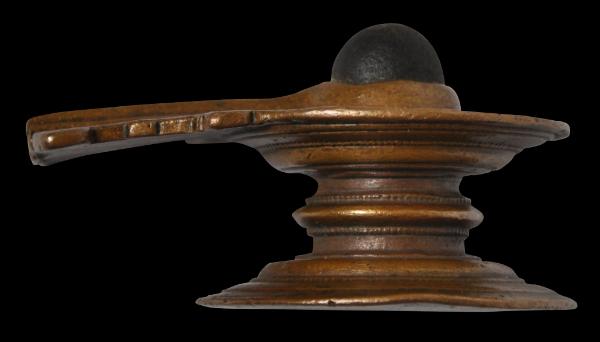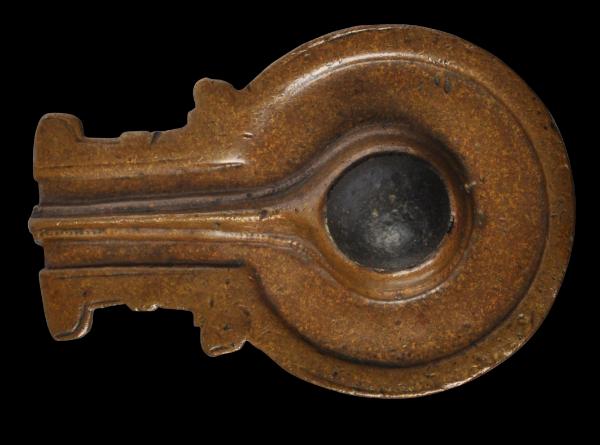
Unusual Shivalingam with Basalt Lingam
Unusual Shivalingam with Basalt Lingam
South India
18th century
length: 9.3cm, height: 4.4cm, width: 6.5cm, weight: 431g
This small, heavy Shivalingam cast from coppery bronze is unusual in that the female part, the yoni, is mounted by a basalt sphere which represents the lingam, the symbol of Shiva, one of the principal deities of Hinduism, and the supreme God within Shaivism, one of the main strands of Hinduism.
The simplicity and minimalism of the form emphasises its great symbolic value. It is beautifully cast with a waisted, tiered yoni platform. The bottom of the base is etched with an eight-petalled lotus flower.
The piece has a delightful, chocolate patina with softened contours from years of puja-related handling. It is also surprisingly heavy – somehow, this small piece weights almost half a kilogram.
The form of the lingam is based on the male genitalia and is an abstract representation of the Hindu deity, Shiva. Lingams are used in worship in temples and smaller shrines, including household shrines. The lingam is seen as a symbol of the energy and potential of Shiva himself.
The lingam is often represented rising from the yoni, the female symbol, the form of which is based on the female genitalia.
The physical union of a lingam with a yoni represents the indivisible two-in-oneness of male and female. Neither representations have any overt sexual meaning however. Indeed, the two are more symbols of power, fertility and prosperity than anything that is sexually charged.Puja worship of a shivalingam typically involves pouring water, milk and ghee offerings over the lingam and the yoni acts as the catchment receptacle and the conduit from which these sacred offerings can be collected and distributed to those in attendance.
The form and the colour and patina of this piece make is particularly beautiful. It is a small sculptural treasure.
References
Bala Krishnan, U.R., & M.S. Kumar, Dance of the Peacock: Jewellery Traditions of India, India Book House Ltd, 1999.
Blurton, T.R., Hindu Art, The British Museum Press, 1992.
Utracht, O., Traditional Jewelry of India, Thames & Hudson, 1997.
Provenance
private English collection.
Inventory no.: 4174
SOLD

